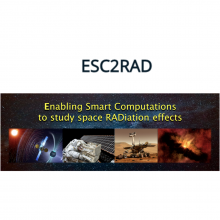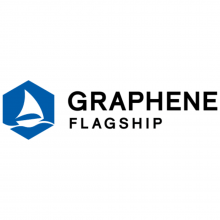Projects at a Glance
ANTHEM - AdvaNced THErmoelectric Materials through Vapor Phase Infiltration
Waste heat—the rejected by-product of all energy conversion processes—remains a huge and unexplored reservoir of green energy. It is estimated that two-thirds of the 160 TWh required for global power consumption is lost to the environment each year. Converting even a fraction of this wasted energy into electricity at the cost of 10 cents per kWh would generate a new EUR 1.0 trillion industry—creating jobs, boosting the economy, and increasing energy efficiency.
R-I PEERS- Pilot experiences for improving gender equality in research organisations
The R&I PEERS project will be based on the concept of gender equality, that can be expressed as “women and men enjoy the same status and have equal opportunity to realize their full human rights and potential to contribute to national, political, economic, social and cultural development, and to benefit from the results”.HYCOAT - A European Training Network for Functional Hybrid Coatings by Molecular Layer Deposition
Thin films of hybrid materials engineered at the molecular scale can enable breakthroughs in several economically and socially relevant technological application areas including packaging & encapsulation, electronics, batteries and biomedical applications. With self-limiting binary reactions, Molecular Layer Deposition (MLD) is the ideal deposition technique for growing ultra-thin, uniform, conformal hybrid films with precise and flexible control over the film thickness and molecular-scale chemical composition. The key objective of HYCOAT is to create a group of exceptionally well-trained young researchers who have a deep understanding of all aspects of MLD technology, as well as broad vision on the application potential of hybrid coatings.MATBIOCAT - Design of Hybrid Protein-Inorganic Nanostructured Biomaterials for Advanced Heterogeneous Catalysis
MATBIOCAT focuses on merging synthetic materials with biomolecules to create functional nanostructures, enhancing performance in extreme conditions for biotransformation processes. The aim is to improve biocatalyst stability in organic solvents, high temperatures, and extreme pH values. Three main sections involve enzyme encapsulation in polymeric networks, designing metal-based nano/microstructures, and creating enzymatic bioreactors. Collaboration across enzymology, polymer chemistry, inorganic chemistry, and material science contributes to this multidisciplinary effort. Challenges include ordered placement of biocatalysts in stable films or microstructures to preserve catalytic performance. The project's ultimate goal is to develop advanced biomaterials with improved enzymatic function, holding potential for various applications.
2D-TopSpIn - Spin detection and control in van der Waals materials for the design of spintronic devices.
The experimental confirmation of 2D topological insulators (2D-TI) with unique conductivity properties in 2007 has potential for advanced quantum computers and spintronic devices. Topological insulators conduct at the edge, offering scattering-free, spin-polarized channels crucial for dissipationless electronics. Challenges persist in practical device creation due to technical complexities. Discovery of 2D-TI phases in TMD materials like 1T-WTe2 enables van der Waals heterostructures, promising high-performance electronics and quantum computing applications. This proposal aims to engineer a spintronic device through rationalized heterostructure design, local and mesoscopic property characterization, and multiscale imaging and transport studies.
By funding program
Contact

Yurdana Castelruiz
Projects Manager
+ 34 943574022
y.castelruiz[at]nanogune.eu






